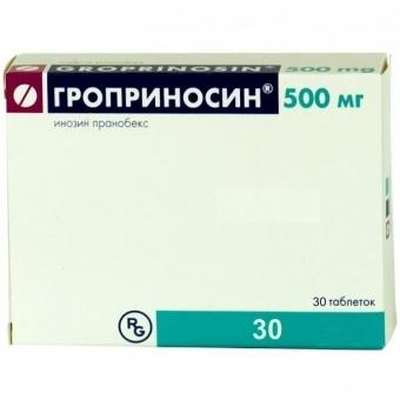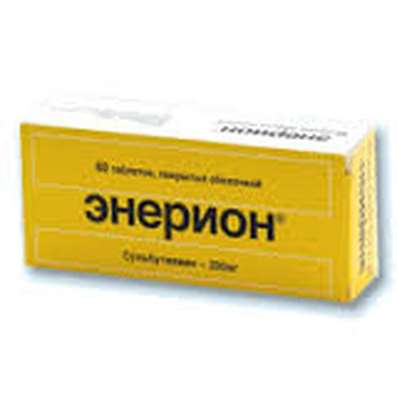Instruction for use: Frontin
I want this, give me price
Dosage form: tablets
Active substance: Alprazolam*
ATX
N05BA12 Alprazolam
Pharmacological group:
Anxiolytics
The nosological classification (ICD-10)
F32 Depressive episode: Adynamic subdepression; Astheno-adynamic subdepressive states; Asthenodepressive disorder; Astheno-depressive disorder; Asthenodepressive state; Astheno-depressive state; Major Depressive Disorder; Vyaloapatichesky depression with retardation; Double depression; Depressive pseudodement; Depressive illness; Depressive mood disorder; Depressive disorder; Depressive mood disorder; Depressive state; Depressive disorders; Depressive syndrome; Depressive syndrome larviated; Depressive syndrome with psychoses; Depressed masks; Depression; Depression Depletion; Depression with the phenomena of inhibition within the framework of cyclothymia; Depression is smiling; Involutional depression; Involutionary melancholy; Involutional depression; Manic-depressive disorder; Masked Depression; Melancholic Attack; Neurotic depression; Neurotic depression; Shallow Depression; Organic depression; Organic depressive syndrome; Simple depression; Simple melancholic syndrome; Psychogenic depression; Reactive depression; Reactive depression with moderate psychopathological symptoms; Reactive depressive states; Reactive depression; Recurrent depression; Seasonal depressive syndrome; Severostatic depression; Senile Depression; Senile Depression; Symptomatic Depression; Somatogenic depression; Cyclotymic depression; Exogenous Depression; Endogenous depression; Endogenous Depressive Conditions; Endogenous Depression; Endogenous depressive syndrome
F41.2 Mixed anxiety and depressive disorder: Depression with anxiety-depressive components; Mixed anxiety-depressive conditions; Anxiety Depression; Anxious and depressing mood; Anxiety-depressive state; Anxious-depressive conditions; Anxiety-depressive syndrome; Anxious-Neurotic Conditions
F41.9 Anxiety disorder, unspecified: Neurotic disorders with anxiety syndrome; Severe anxiety; Neuro-like symptomatology; Neuro-like disorders; Neuro-like conditions; Neuroses with anxiety symptoms; Neuroses with a sense of anxiety; Acute situational and stress anxiety; Acute attack of anxiety; Severe Anxiety; Situational Anxiety Disorder; State of anxiety; Anxious and delusional component; Alarming state; Anxiety; Anxiety Disorders; Anxiety syndrome; Sense of anxiety; Alarm conditions; Chronic neurotic anxiety; Susto; Psychopathy with a predominance of anxiety and anxiety; Anxiety disorders in neurotic and neurosis-like states; Anxious neuroses; Anxious and delusional state; Acute situational stress alarm; Depressed mood with elements of anxiety
F44 Dissociative [conversion] disorders: Psychogenic psychosis; Conversion disorder; Dissociative phenomena; Pseudodegmentation; Conversion symptoms
F48 Other neurotic disorders: Neurosis; Neurological diseases; Neurotic disorders; Neurotic condition; Psychoneurosis; Anxious-Neurotic Conditions; Chronic neurotic disorders; Emotional reactive disorders
F51.0 Insomnia of inorganic etiology: Situational insomnia; Situational sleep disorders
N94.3 Premenstrual tension syndrome: Pronounced premenstrual syndrome; Menstrual psychosomatic disorder; Menstrual syndrome; Premenstrual tension; Premenstrual status; Premenstrual period; Premenstrual syndrome; Menstruation syndrome
R45.0 Nervousness: Stress nervous; Mental stress; State of tension; Stress states; Nervous disorders; Voltage; Tension; Psychoemotional stress; Stress state; Emotional tension; Feeling of inner tension; Psychoemotional stress in stressful situations; Nerve Stress Reactions; Internal stress; The state of persistent mental stress; Tearfulness
R45.1 Anxiety and agitation: Agitation; Anxiety; Explosive excitability; Internal stimulation; Excitability; Excitation; Excitation acute; Psychomotor agitation; Hyperexcitability; Motor excitement; Cessation of psychomotor agitation; Nervous excitement; Restlessness; Night trouble; Acute stage of schizophrenia with excitation; Acute mental agitation; Paroxysm of excitation; Overexcitation; Increased excitability; Increased nervous excitability; Increased emotional and cardiac excitability; Increased agitation; Mental arousal; Psychomotor agitation; Psychomotor agitation in psychoses; Psychomotor agitation of an epileptic nature; Psychomotor paroxysm; Psychomotor fit; Symptoms of excitation; Symptoms of psychomotor agitation; The state of agitation; A state of anxiety; Excitation status; A state of heightened concern; The state of psychomotor agitation; Conditions of anxiety; Excitation conditions; The state of excitement in somatic diseases; Excitation level; Feelings of anxiety; Emotional arousal
F45.3 Somatoform dysfunction of the autonomic nervous system: Cardioneurosis; Cardiovascular neurosis; Syndrome of neurocirculatory dystonia; Somatovegetative disorder; Somatovegetative complications
R45.4 Irritability and anger: Neurosis with increased irritability; Outbursts of anger; Anger; Resentment; Increased irritability; Increased irritability of the nervous system; Irritability; Irritability in neuroses; Irritability in psychopathic disorders; Symptoms of irritability; Dysphoria
Composition and release form
1 tablet contains alprazolam 0.25, 0.5 or 1 mg; In banks of 30 or 100 pcs., In a box of 1 can.
Pharmachologic effect
Mode of action - antidepressant, anticonvulsant, anxiolytic, myorelaxing, sleeping pills.
Interacts with benzodiazepine receptors, enhances the inhibitory effect of GABA.
Pharmacokinetics
After oral intake about 80% is absorbed. Binding to plasma proteins - 70%. Cmax in plasma is achieved after 1.7 hours. After a single dose of 0.5 mg of the drug, the average Cmax is 7.1 ng / ml. There is a linear relationship between the dose of alprazolam and the concentration in the plasma. T1 / 2 - 10-12 hours. It is actively metabolized in the liver. The main metabolite is the alpha-hydroxyl metabolite, which has biological activity. It is excreted mainly by the kidneys, in unchanged form - 20%.
Indications for the Frontin
Alarming conditions associated with depression; Neuroses with disturbing symptoms of different genesis; Panic disorder, premenstrual syndrome.
Contraindications
Hypersensitivity, severe violations of the liver or kidneys, glaucoma, myasthenia gravis, acute respiratory failure, sleep apnea syndrome, pregnancy, breast-feeding, age to 18 years (safety of use not established).
Application in pregnancy and breastfeeding
Contraindicated. At the time of treatment should stop breastfeeding.
Side effects
From the nervous system and sense organs: headache, dizziness, drowsiness, memory impairment and coordination of movements, fatigue, ataxia, blurred speech, muscle weakness, impaired vision, neurotic reactions, depression, tremor, insomnia, intellectual disorders, confusion, increase Intraocular pressure.
On the part of the intestine: nausea, vomiting, jaundice, increased activity of hepatic transaminases.
From the genitourinary system: urinary incontinence or retention, violation of the libido and menstrual cycle.
Other: changes in body weight, dermatitis, various manifestations of the autonomic nervous system; Irritability, hostility and obsessive thoughts in patients with posttraumatic disorders when discontinuing alprazolam therapy.
Interaction
Increases the concentration of imipramine, desipramine and digoxin in the blood serum. Psychotropic, anticonvulsant, antihistamines and alcohol enhance (mutually) the depressant effect. The metabolic clearance of alprazolam decreases with the simultaneous administration of conventional therapeutic doses of cimetidine and antibiotics from the macrolide group. When combined with cimetidine, macrolides, nefazodone, fluvoxamine, fluoxetine, propoxyphene, sertraline, diltiazem, digoxin and oral contraceptives, a dose of alprazolam should be lowered. Incompatible with ketoconazole and other antifungal agents of azole type.
Dosing and Administration
Inside. The dose is set individually and corrected during the treatment (increases cautiously, first in the afternoon, and then in the evening reception). It is recommended to use the minimum effective dose. Adults, with anxiety: initial dose - 0.25-0.5 mg 3 times a day, if necessary, increase the dose to 4 mg / day in several receptions; At depression: before a dream, an initial dose - on 0,5 mg 3 times a day, if necessary, increase the dose to 4 mg / day; Duration of treatment - 4-12 weeks; With panic disorder: the initial dose is 0.5-1 mg at bedtime or 0.5 mg 3 times a day, for most patients 4-6 mg / day for 4-12 weeks, in some cases, if necessary, The dose is increased to 10 mg / day (but not more than 1 mg every 3-4 days) and the course of treatment - up to 8 months. Elderly and weakened patients: the initial dose - 0.25 mg 2-3 times a day, if necessary, the dose is gradually increased to 0.5-0.75 mg / day.
Precautionary measures
With extreme caution apply for violations of the liver and kidneys. In treating patients who are prone to drug abuse, the increased risk of developing drug dependence should be considered. To avoid the syndrome of "withdrawal" (withdrawal symptoms: dysphoria, insomnia, abdominal and skeletal muscle cramps, vomiting, sweating, tremors, convulsions), the treatment is stopped gradually, reducing the dose by no more than 0.5 mg every 3 days. Do not use during work drivers of vehicles and people whose profession is associated with increased concentration of attention.
Storage conditions of the drug Frontin
At a temperature not higher than 30 ° C.
Keep out of the reach of children.
Shelf life of the drug Frontin
3 years.
Do not use after the expiry date printed on the package.

 Cart
Cart





